Re: B-23 Dragon on ebay recently
Wed Jul 14, 2010 11:20 am
red two wrote:Just a quick question? Was the tail turret on the B-23 was it a single mount or a twin like the B-17? Was it a a single 30 caliber or a single 50 caliber, or twins?
The tail hand a single 50 in a clam shell door arrangement.
Re: B-23 Dragon on ebay recently
Wed Jul 14, 2010 4:25 pm
hmm geneseo has a dragon that they bought in 2008 and has been sitting in texas ever since
Re: B-23 Dragon on ebay recently
Wed Jul 14, 2010 5:51 pm
Maybe the Air Force wants it back.
Re: B-23 Dragon on ebay recently
Mon Jul 19, 2010 3:31 pm
Back home, will get the photos posted ASAP.
Gary
Gary
B-23 Dragon
Tue Jul 20, 2010 7:30 pm
IIRC, Jimmy Doolittle originally chose the B-23 Dragon for infamous Tokyo raid until he realized that the wingspread was too great to clear the island on an aircraft carrier. Consequently he selected the B-25. The B-23 was the optimal choice for the raid as they were certainly expendable as production had been terminated and were of little use in the grand scheme scheme of the war effort.
Also, correct me if I'm wrong, but I was under the impression that the B-23 was Douglas's contribution for the Army Air Corps long range bomber competition of which Boeing won with its superior B-17. True??
Also, correct me if I'm wrong, but I was under the impression that the B-23 was Douglas's contribution for the Army Air Corps long range bomber competition of which Boeing won with its superior B-17. True??
Re: B-23 Dragon on ebay recently
Wed Jul 21, 2010 1:09 am
I've always heard that it was the B-18 that "won" the competition after the B-17 prototype crashed. The Air Corps placed a substantial order for B-18s, but was still impressed enough with the Fortress to order a few more for evaluation. One of the B-17's biggest limitations was its bombload, and the small bombay. That was because it was originally designed to meet a set of specs intended for a twin-engine design.
SN
SN
Re: B-23 Dragon on ebay recently
Wed Jul 21, 2010 1:53 am
Steve Nelson wrote:I've always heard that it was the B-18 that "won" the competition after the B-17 prototype crashed. The Air Corps placed a substantial order for B-18s, but was still impressed enough with the Fortress to order a few more for evaluation.
From Wiki
In 1934, the United States Army Air Corps put out a request for a bomber with double the bomb load and range of the Martin B-10, which was just entering service as the Army's standard bomber. In the evaluation at Wright Field the following year, Douglas showed its DB-1. It competed with the Boeing Model 299 (later the B-17 Flying Fortress) and Martin Model 146. While the Boeing design was clearly superior, the crash of the B-17 prototype (caused by taking off with the controls locked) removed it from consideration. During the depths of the Great Depression, the lower price of the DB-1 ($58,500 vs. $99,620 for the Model 299) also counted in its favor. The Douglas design was ordered into immediate production in January 1936 as the B-18.
http://en.wikipedia.org/wiki/Douglas_B-18_Bolo
The Douglas B-23 Dragon was a twin-engined bomber developed by Douglas Aircraft Company as a successor to (and a refinement of) the B-18 Bolo.
http://en.wikipedia.org/wiki/Douglas_B-23_Dragon
Steve Nelson wrote:One of the B-17's biggest limitations was its bombload, and the small bombay. That was because it was originally designed to meet a set of specs intended for a twin-engine design.
My understanding was that range - for a 'hemisphere' type bomber was considered more important than bombload.
Wiki again:
On 8 August 1934, the U.S. Army Air Corps (USAAC) tendered a proposal for a multi-engined bomber to replace the Martin B-10. Requirements were that it would carry a "useful bombload" at an altitude of 10,000 feet (3 km) for ten hours with a top speed of at least 200 miles per hour (320 km/h).[9] They also desired, but did not require, a range of 2,000 miles (3,200 km) and a speed of 250 miles per hour (400 km/h). The Air Corps were looking for a bomber capable of reinforcing the air forces in Hawaii, Panama, and Alaska.[10] The competition would be decided by a "fly-off" at Wright Field in Dayton, Ohio. Boeing competed with the Douglas DB-1 and Martin Model 146 for the Air Corps contract.
...
At the fly-off, the four-engine Boeing design's performance was superior to those of the twin-engine DB-1 and Model 146, and then-Major General Frank Maxwell Andrews of the GHQ Air Force believed that the long-range capabilities of four-engine large aircraft were more efficient than shorter-ranged twin-engined airplanes, and that the B-17 was better suited to their doctrine.[16] His opinions were shared by the Air Corps procurement officers, and even before the competition was finished they suggested buying 65 B-17s.
http://en.wikipedia.org/wiki/B-17_Flying_Fortress
Re: B-23 Dragon on ebay recently
Wed Jul 21, 2010 10:00 am
JDK:
Thank you so much for re-calibrating me on the evolution of mid-to-late 1930's bomber development. In retrospect, now that I think about it, the production of the B-23 came several years after the B-17 contact had been been awarded to Boeing. Therefore it couldn't have been in competition with the Boeing...yes, Old Timers Disease has shown its ugly head again! I was reviewing B-23 specs trying to determine what "DB" number Douglas had assigned to the aircraft but no luck. I can account for the DB-1 and for the DB-7 & DB-8 but DB-2 thru DB-6 remain a mystery. Perhaps some WIX'ers can shed some light on the subject.
Thank you so much for re-calibrating me on the evolution of mid-to-late 1930's bomber development. In retrospect, now that I think about it, the production of the B-23 came several years after the B-17 contact had been been awarded to Boeing. Therefore it couldn't have been in competition with the Boeing...yes, Old Timers Disease has shown its ugly head again! I was reviewing B-23 specs trying to determine what "DB" number Douglas had assigned to the aircraft but no luck. I can account for the DB-1 and for the DB-7 & DB-8 but DB-2 thru DB-6 remain a mystery. Perhaps some WIX'ers can shed some light on the subject.
Re: B-23 Dragon on ebay recently
Wed Jul 21, 2010 12:23 pm
jdvoss wrote:....but DB-2 thru DB-6 remain a mystery.
JD, DB-2 was the designation for the powered nose turret version of the last 35 B-18's produced.
DB-4 was a proposed bomber version of the DC-4E.
Can't find one of my Douglas books, so I'm not sure about DB-5 and DB-6. I thought DB-5 was to be derived
from DC-5.
Re: B-23 Dragon on ebay recently
Wed Jul 21, 2010 4:44 pm
jdvoss wrote:Thank you so much for re-calibrating me on the evolution of mid-to-late 1930's bomber development.
No problem, and to be honest (should've said this before!) I didn't know it myself, I just went and checked what I thought I vaguely remembered. As ever Wiki is an easy hit, and while the texts often needs support, with well footnoted articles like the quoted ones, is often more consistently reliable than some more official websites.
Old Timers Disease has shown its ugly head again!
Hey, but I'm young and lovely, and I didn't remember it either!
Regards
Re: B-23 Dragon on ebay recently
Wed Jul 21, 2010 8:10 pm
DB-4 was a proposed bomber version of the DC-4E.
..which the Japanese eventually built after buying the sole DC-4E prototype. The resulting faliure of the G5N "Liz" showed that Douglas was right to abandon the idea.
SN
Re: B-23 Dragon on ebay recently
Sun Jul 25, 2010 9:12 pm
B-23 shots as promised, took these shots in 99. Should have several more of the Dragon and all the statics in general, including the Catalina and other birds in the restoration hanger at the time. Will post when I find them. Enjoy:
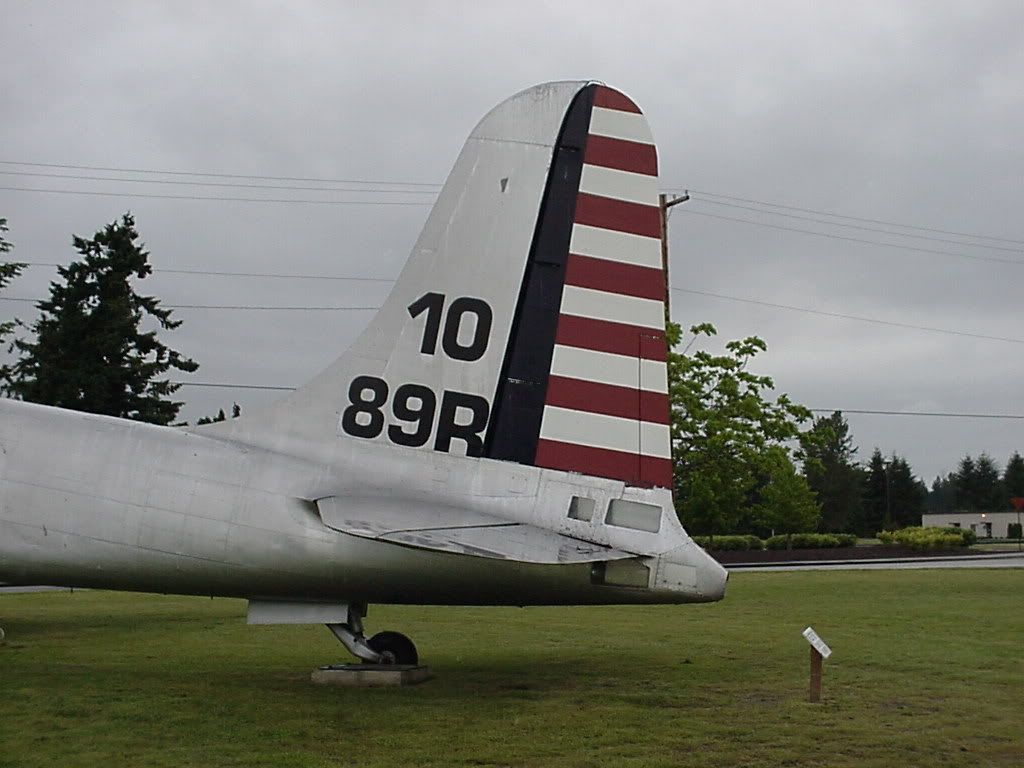
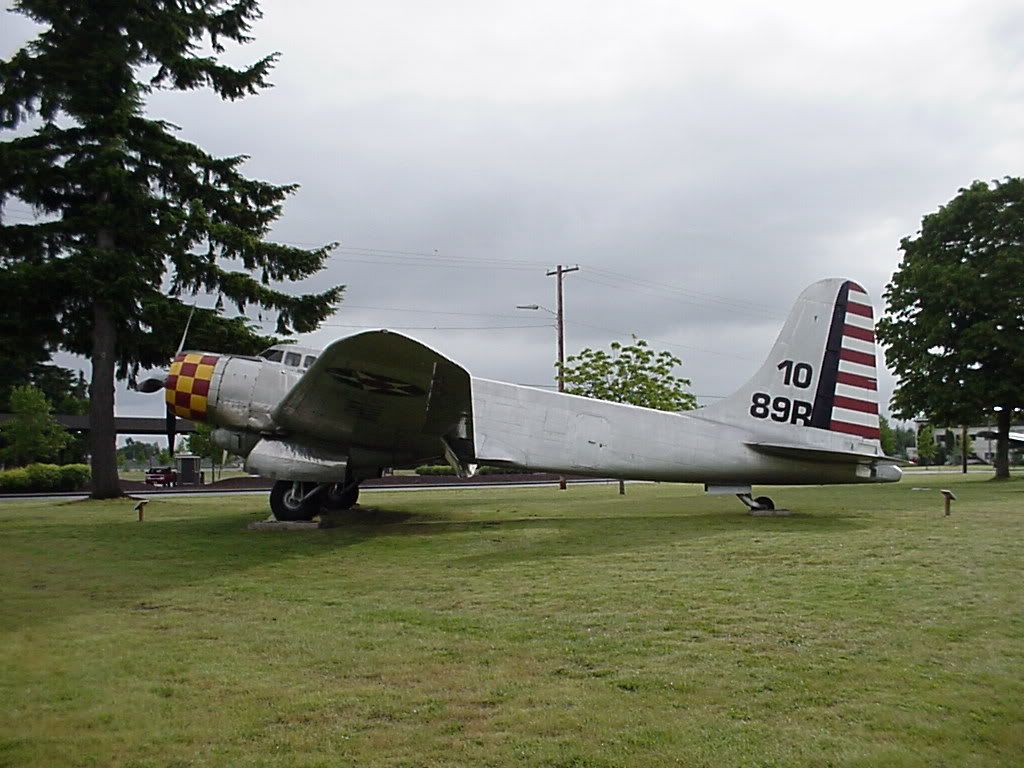
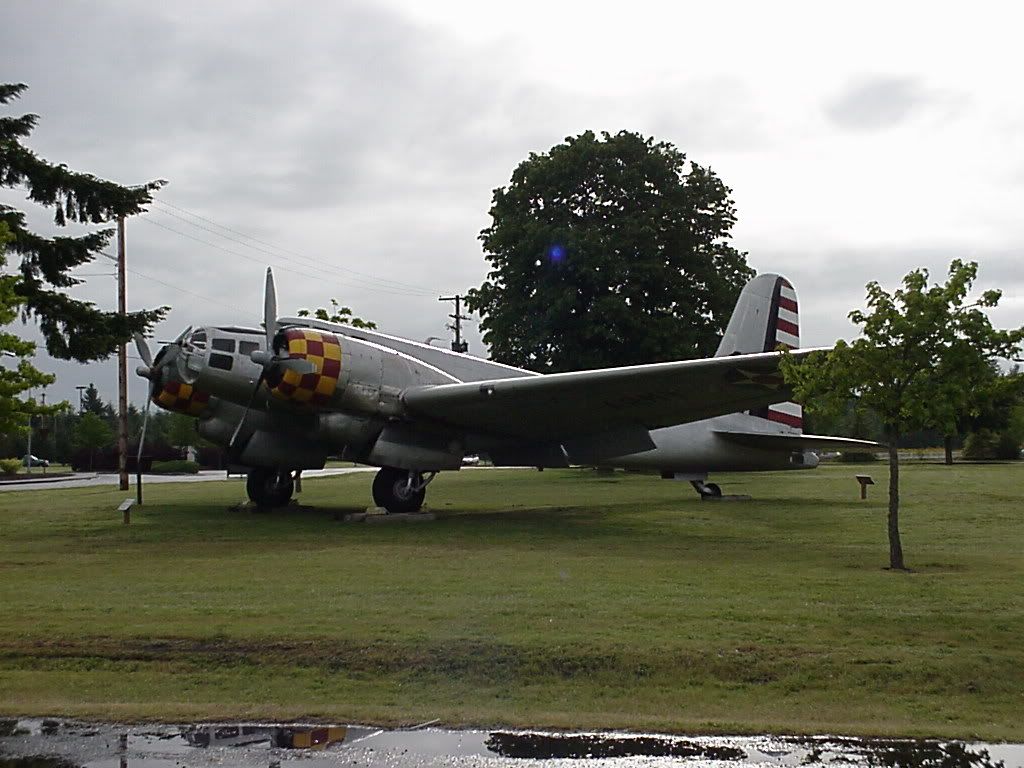
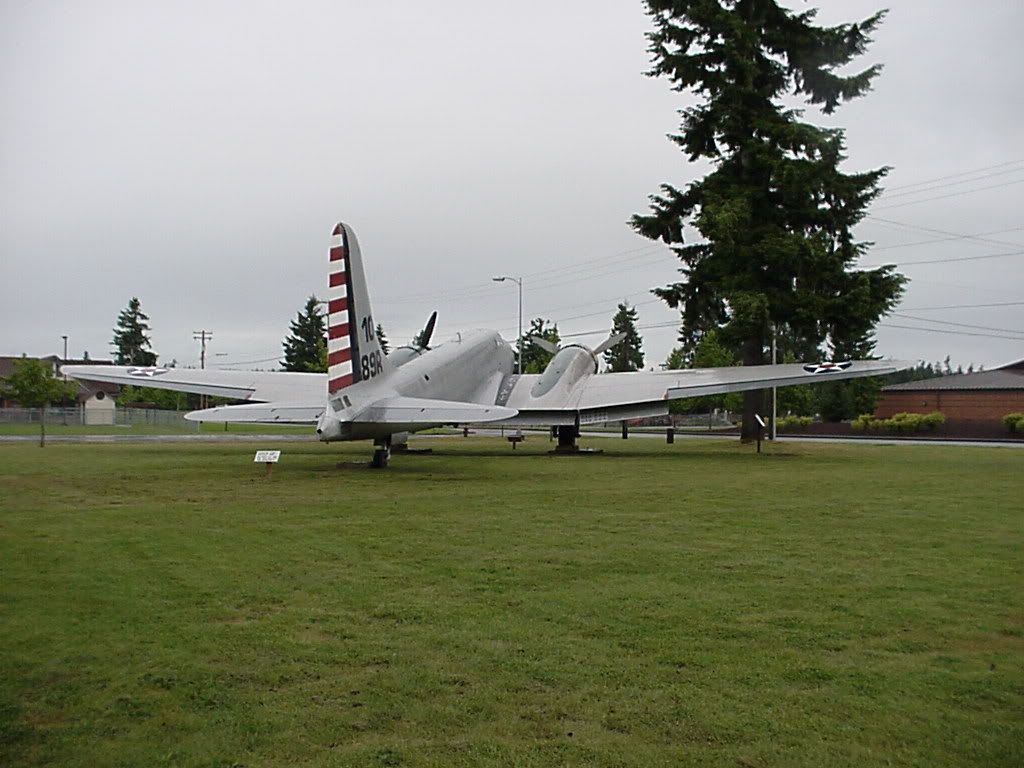
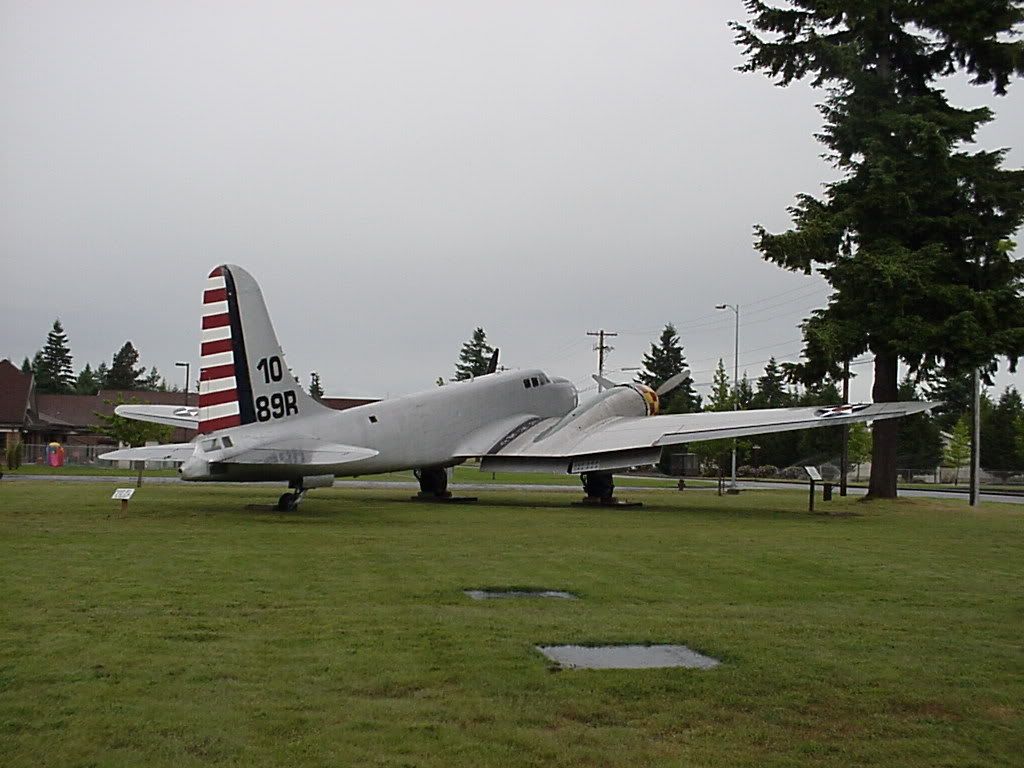
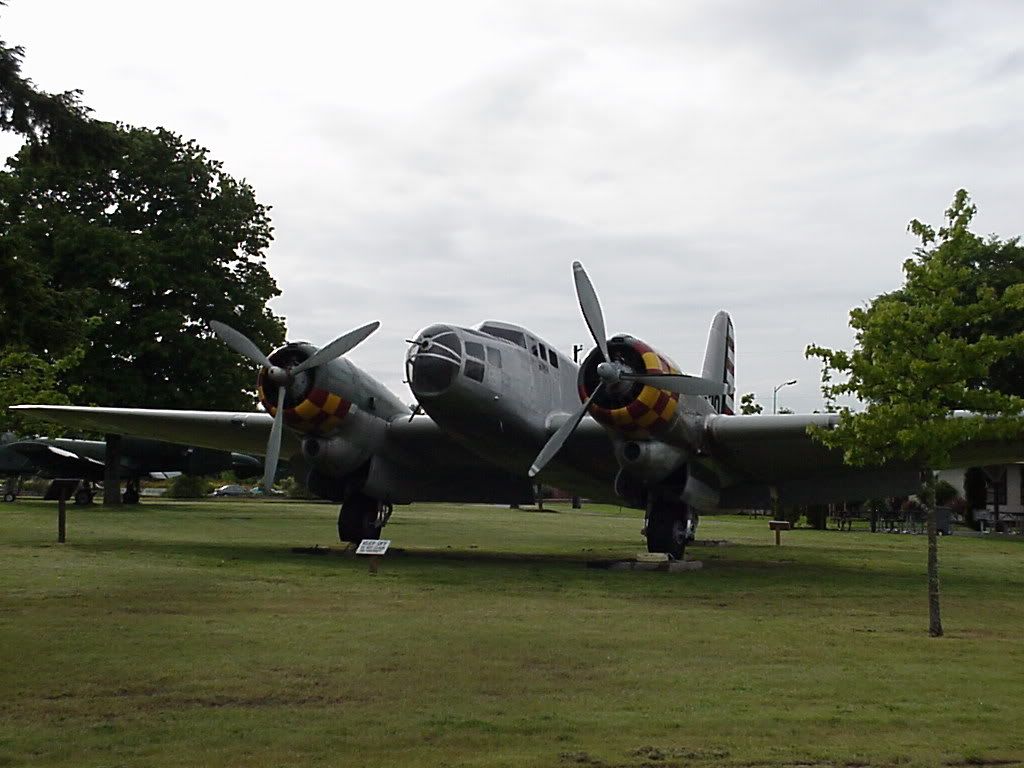






Re: B-23 Dragon on ebay recently
Mon Jul 26, 2010 9:09 pm
Is that the only surviving B-23 restored with a bomber nose? I know the NMUSAF eventually plans to put theirs back in military configuration. I last saw it in the restoration shop back in the mid-90s. The long civie nose had been removed, and the staff discovered the original nose window frames were still im place..they'd just been sheetmetalled over. I also recall seeing the very battered remains of a B-23 tail turret in the shop..don't know where it came from.
SN
SN
Re: B-23 Dragon on ebay recently
Tue Jul 27, 2010 2:04 pm
Steve Nelson wrote:Is that the only surviving B-23 restored with a bomber nose? I know the NMUSAF eventually plans to put theirs back in military configuration.SN
Yes, the McChord(39-036) bird appears to be the most complete appearing. The Castle(-045) B-23, retains
her side nose glazing, but has a metal nose bowl. Kermit's(-057) Dragon has a UC-67 nose rather than the
"executive-mod" nose.
The former NMUSAF curator at one time planned to combine, the one they have at Dayton, some parts from the
McChord bird and some of the bits recovered from the Loon Lake bird and assemble it all into one
"benchmark" B-23...dunno if that's still the plan.
A tale I've heard of the years, is that years ago a retired Douglas engineer donated the engineering
lofts for the recreation of the bomber nose to the CAF..dunno if it's true, but would be interesting
to see if they're archived somewhere in the Airpower museum.
Re: B-23 Dragon on ebay recently
Tue Jul 27, 2010 8:04 pm
Heck ya, just call up Midland and I am sure they would jump thru their a__ to send up the lofts!